Welcome to myVelleity.com- A photoblog.
As for what I like to photograph, I would say natural and historical things. Residing in San Antonio, Texas, provides a profusion of both. I am grateful for all clubs, societies, and individuals who are actively helping to preserve the atmosphere of our unique and charming city and sincerely hope that in its own way my photo-blog will help to win other enthusiastic admirers to an appreciation of all the struggle, efforts, sacrifice, and achievement that the San Antonio of today represents. Thanks for visiting!
![]()
![]()

The Misión of San José 
Known as the “Queen of the Missions”, this is the largest of the missions and has been almost fully restored to its original design. Spanish missions were not churches, but communities, with the church the focus. Mission San José shows the visitor how all the missions might have looked over 250 years ago.
San José Mill

During restoration of San José Mission’s surrounding land in 1935, excavation along a short section of the acequia north of the mission church revealed, underground, “a vaulted, plastered room with stone steps.” These turned out to be remains of the old acequia fed mission mill, which was soon rebuilt on its original site in full working order. The Mill is the oldest known in Texas, believed to be operational in approximately 1790.
![]()
 The Hays Street Bridge
The Hays Street Bridge
The Hays Street Bridge on the city’s East side officially opened with a ribbon-cutting ceremony on July 20, 2010. The bridge has been rehabilitated into a pedestrian and bicycle connector linking downtown to the Dignowity Hill Historic District and the East side. The former railroad bridge was moved to its current location in 1910 to provide a vehicular crossing over the railroad tracks.
Hot Sulphur Wells
In the year of 1893, along the San Antonio River a health spa and resort could be found that piped hot sulfurous water from an Edwards aquifer well. The 104° water was used to fill many therapeutic swimming pools and baths. The first structure burned to the ground in 1894, just one year into operation. The most famous version of the spa was its replacement, a lavish Victorian structure built in 1900 that became a world-class vacation destination for celebrities, world leaders, and wealthy industrialists. Some of its more prestigious visitors included Will Rogers, Charlie Chaplin, Teddy Roosevelt, Douglas Fairbanks, and Cecil B. De Mille.
San Pedro Springs Park
Three hundred and four years ago, a park was officially named in what would eventually become one of the largest urban cities in the United States. That city is San Antonio, Texas, and the park would become known as San Pedro Springs Park, the second oldest public park in the country. From this location a wealth of history has sprung forth, all of which can be learned by following the link given at the end of this photographic series…
![]()
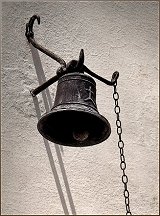
Spanish Governor’s Palace
The Spanish Governor’s Palace is one of the oldest residential structures still standing in Texas. Plans for the structure are known to have originated as early as 1722, when the Marquis de San Miguel de Aguayo proposed the construction of a Commandancia within a report to the King of Spain. In response, the King ordered that he reevaluate the Spanish military presence on the French frontier. Among the resulting recommendations was a reduction of the East Texas garrisons and relocation of several missions. It was in June of 1773 that the capital of Spanish Texas was relocated westward to San Antonio, and the Presidio de San Antonio de Béjar was poised to become a bulwark for the region, just as it had served as a safeguard for the burgeoning missions.

Presidio La Bahia
Presidio La Bahia, an inland frontier fort established 1749, became the only fort responsible for the defense of the coastal area and eastern province of Texas after the abandonment of the Presidios at Los Adaes and Los Orcoquisac. Site of the Goliad Massacre and the First signing of the Texas Declaration of Independence from Mexico, the Presidio La Bahia is the oldest standing fort west of the Mississippi. Its original purpose was to guard the interests of the Spanish Crown against Native American and French attackers.

Mission Concepciòn
One of the most attractive of the San Antonio missions, the church at Concepcion looks essentially as it did more than 200 years ago, when it stood at the center of local religious activity. This mission was named in honor of Our Lady of the Immaculate Conception and Juan de Acuña, the Marqués de Casafuerte. The Marqués was Viceroy of New Spain (Mexico) when the mission transferred to the San Antonio River area in 1731. Originally founded in 1716 in what is now eastern Texas, the mission was one of six to serve as a buffer against the threat of French incursion into Spanish territory from Louisiana. Dedicated in 1755, this sturdy church is built of limestone which was quarried on site.

Mission Espada NHS
Mission San Francisco de la Espada was a Roman Catholic mission established by Spain near San Antonio de Bexar in northern New Spain in 1731 to convert local Native Americans to Christianity and solidify Spanish territorial claims in the New World against encroachment from France. Mission San Francisco de la Espada was the first mission established in Texas. Since the mission founding, it endured numerous hardships and several relocations, the church was completed in 1756.

The Espada Acequia
The Espada Aquaduct was constructed in 1745 by Franciscans to serve the mission lands of Espada. It is the only remaining Spanish aqueduct in the United States.
![]()

Remembering Michael David Lay
Everyone who met Mike, knows what a personality he was. His humor was in direct relation to his wit and intelligence. His fondness of animals a measure of how big his heart was. If you had a connection with Michael, it was life long. Mike had an inquisitive and adventurous spirit, was generous to a fault and a doting Son. Losing someone like Michael really brings in to focus the importance of your relations with others. Not just those people you see everyday, but also those whom you actually want included in your life. Those who knew him will miss his presence, but we are all a bit richer for sharing his company. Even though it has been many years since I’ve seen him last, I will continue to cherish the time we spent together as friends.

Stars & Stripes Over San Antonio
With a near-unanimous vote, On July 2nd, 1776, the Continental Congress voted in favor of independence from Britain. On that day, John Adams wrote to his wife Abigail that July 2 “will be celebrated, by succeeding Generations, as the great anniversary Festival” and that the celebration should include “Pomp and Parade…Games, Sports, Guns, Bells, Bonfires and Illuminations from one End of this Continent to the other.” On July 4th, the Congress formally adopted the Declaration of Independence, although the vote for actual independence took place on July 2nd, from then on the 4th became the day that was celebrated as the birth of American independence. In accordance with the long standing tradition, a spectacular sight exploded over the city as San Antonio celebrated America’s Independence Day at HemisFair Park, the first annual “STARS & STRIPES OVER SAN ANTONIO”. The event was attended by more than 275,000 residents.

State Capitol Building- Austin, Texas
When Texas needed a new capitol building in 1882, the state was cash-poor and land-rich. So the legislature accepted bids from anyone willing to construct the building in exchange for 3 million acres of Panhandle land. A syndicate of four Chicago businessmen got the bid, the 3 million acres, and an extra 50,000 acres for surveying the West Texas soil. The deal created the XIT Ranch – a 30 mile wide piece of land stretching 200 miles along the Texas-New Mexico border through 10 counties. The massive “Sunset Red” granite statehouse was officially opened to the public on San Jacinto Day, April 21, 1888. At the time, it was the largest state Capital Building in the nation, and considered the seventh largest structure in the world.
![]()
Lost Maples SNA: West Trail

Lost Maples SNA is an outstanding example of Edwards Plateau flora and fauna. The area contains a combination of steep, rugged limestone canyons, springs, plateau grasslands, wooded slopes, and clear streams. It also features a large, isolated stand of uncommon Uvalde Bigtooth Maple, whose fall foliage can often be a spectacular attraction.
 Lost Maples SNA: East Trail
Lost Maples SNA: East Trail
Lost Maples State Natural Area covers 2174.2 scenic acres in Bandera and Real Counties, north of Vanderpool on the Sabinal River. Archaeological evidence shows that this area was used by prehistoric peoples at various times. In historic times, which began with Spanish exploration and colonization efforts in the late 17th century, the Apache, Lipan Apache, and Comanche Indians ranged over the land and posed a threat to settlement well into the 19th century.
![]()
Palo Duro Canyon, Texas

Palo Duro Canyon is the most spectacular and scenic landscape feature in the Panhandle of Texas. Palo Duro Canyon was carved into the eastern Caprock escarpment of the High Plains during the past ninety million years by the headwaters of the Red River and by attendant weathering. The canyon extends sixty miles southeast, and reaches depths of 800 feet from rim to floor with an average width of more than six miles. The steep sides of Palo Duro Canyon consist of bright, banded layers of orange, red, brown, yellow, grey, maroon, and white rocks that represent four different geologic periods and a time span of more than 240 million years. Adding to the canyon’s scenic grandeur are numerous pinnacles, buttes, and mesas, each protected by a cap of erosion-resistant sandstone or other rock.
 Big Bend National Park
Big Bend National Park
Big Bend is otherworldly. It’s one of the last places left that’s a long way from everywhere, so far away that you should get the feeling you’ve fallen off the edge of the earth. Big Bend bears the name of the most significant feature of the landmass known as Texas: a giant bend in the course of a giant river in a distant part of the state. An area so mythically rough, rugged, desolate and dangerous that if it didn’t exist, someone certainly would have imagined it -a dreamscape of towering mountains, soaring canyons, and a ribbon of Life coursing through.
![]()
Frio River, Texas

The cool and consistent flow of the Frio River has made it a popular summertime destination. Garner State Park, on the river about 10 miles south of Leakey and 75 miles west of San Antonio, provides river access for water recreation, camping, fishing and other activities.
Roy B. Inks Bridge; Llano, Texas
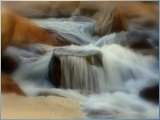
“[. . .] The rain continued through Thursday, and around 8:30 on Friday morning, the river began to rise. The next week’s headline screamed, “FRIDAY’S FLOOD WASHED OUT BRIDGE,” and went on to say, “The worst disaster Llano has had in many years occurred last Friday (June 14) about noon, when the Llano River went wild, and washed out the steel bridge (built in 1892) over the stream here.” (John Hallowell)





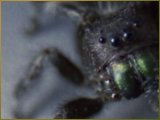


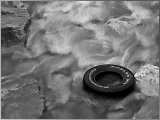


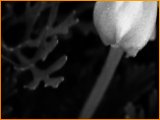
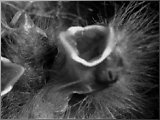




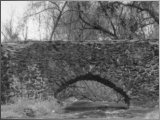

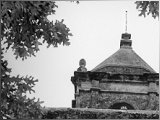

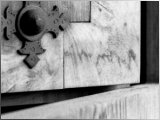










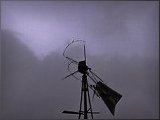



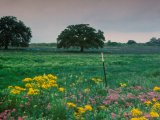























A lovely collection.
WOW! What a wonderful collection of images. Love how they are seemingly unrelated..but all tie in to one another.
Fantastic collection of floral images. Love how you do this!!!
A fascinating collection of impressive images. Excellent work!
this is a really nice set of images.
Very impressing Scott! Keep on shooting….you’re great!
A fascinating collection of impressive pictures. Have a good day. Antoine.
very fine collection Scott!
an impressive collection of pictures. I hope to see many more.
A genuinely excellent publish by you my friend!
My girlfriend and I met you on the grounds of the San Juan Mission. It is always nice to discuss photography with a fellow hobbiest but even better when your a tourist with nothing to guide you except travel brochures. San Antonio has such a vibrant culture and history, it’s difficult to capture in the short 4 days we were there. Greaat pictures. Feel free to explore my smugmug for my collection of areas I have explored.
Thank you Doug,
So glad for your visit, and a safe return home… please come again!
Hey there, I ‘m not use to comment but figured I would do it now. Plain and simple I like your site.